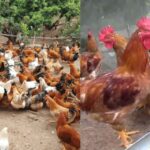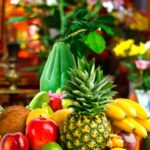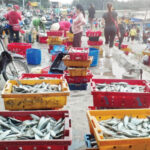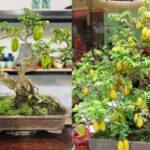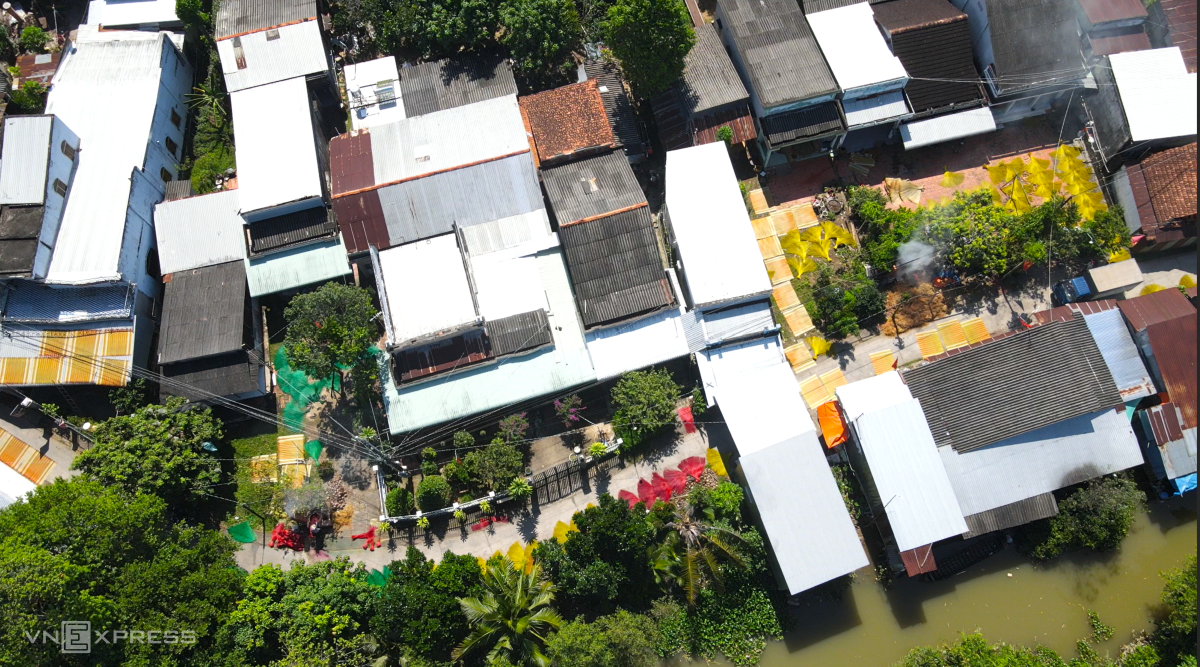
Exploring the Vibrant Art of Weaving in Dinh Yen Village
Nestled by the Hau River, the 200-year-old weaving village of Dinh Yen comes alive with color and tradition. Recognized as a National Intangible Cultural Heritage in 2013, the village is home to around 10 workshops and over 800 households engaged in the art of dyeing and weaving.

In the lead-up to Tet, bundles of fibers and mats line the yards and roads of Dinh Yen.
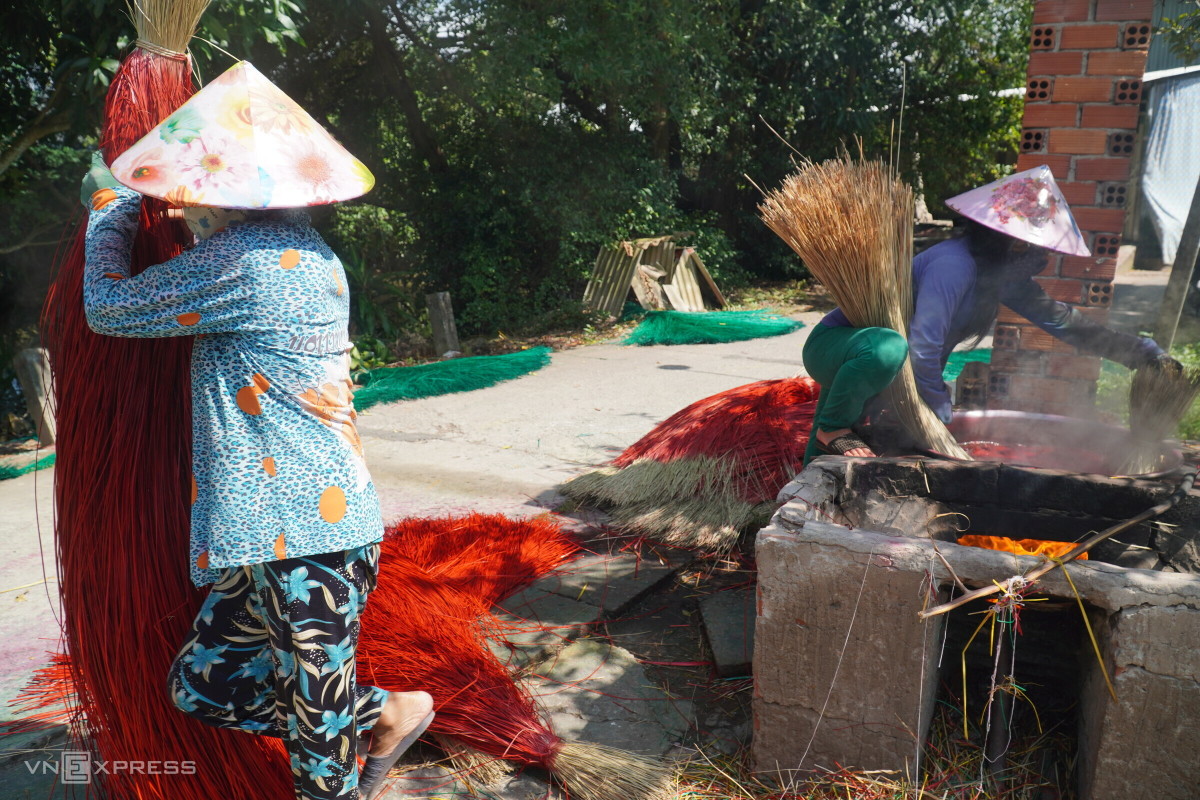
Mrs. Nguyen Kim Van, a weaver with over 30 years of experience, shares that the Tet season begins as early as the tenth lunar month. Her family stays up late and wakes up early to dye and weave mats, ensuring they can meet the demands of traders.
“During Tet, many families buy new mats, so the market is busier. Each day, weavers can earn over 100,000 VND,” Mrs. Van reveals.
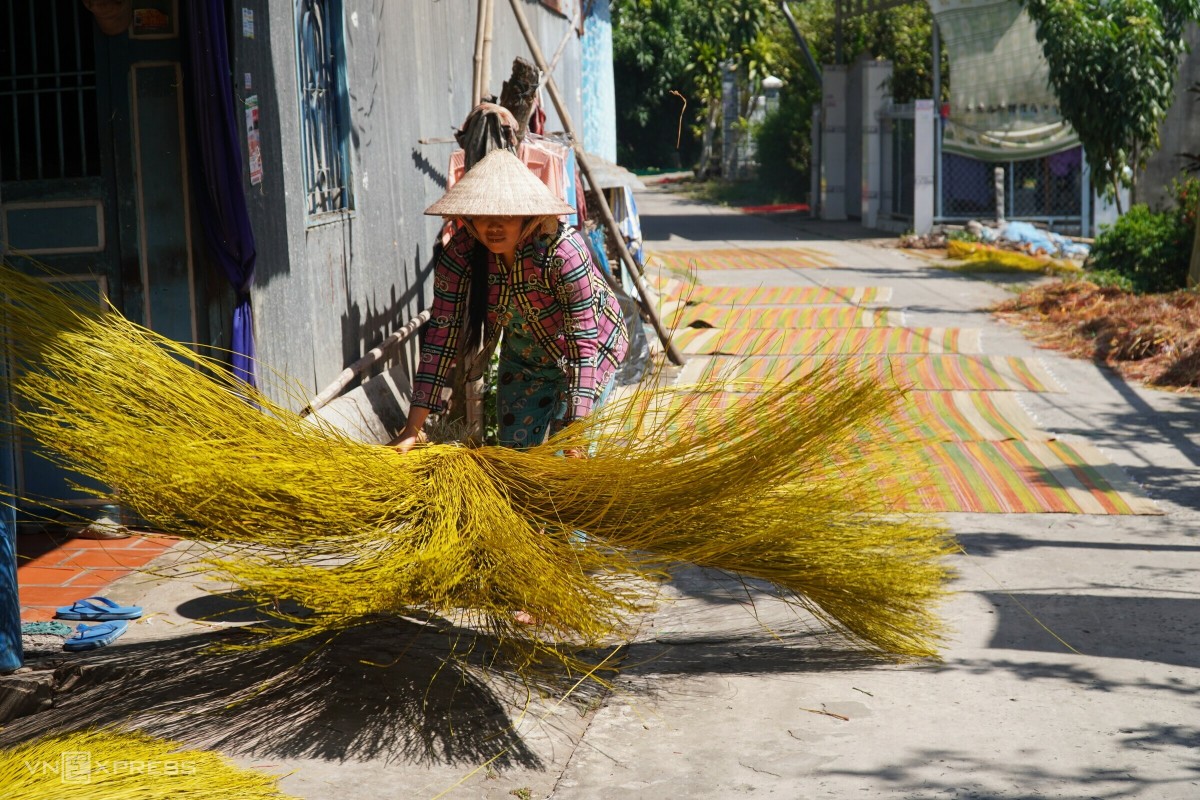
Dyed fibers are laid out to dry for about a day. The vibrant colors of the mats are achieved through a combination of red, green, and yellow dyes, contrasted with the natural ivory shade of the lat fiber.
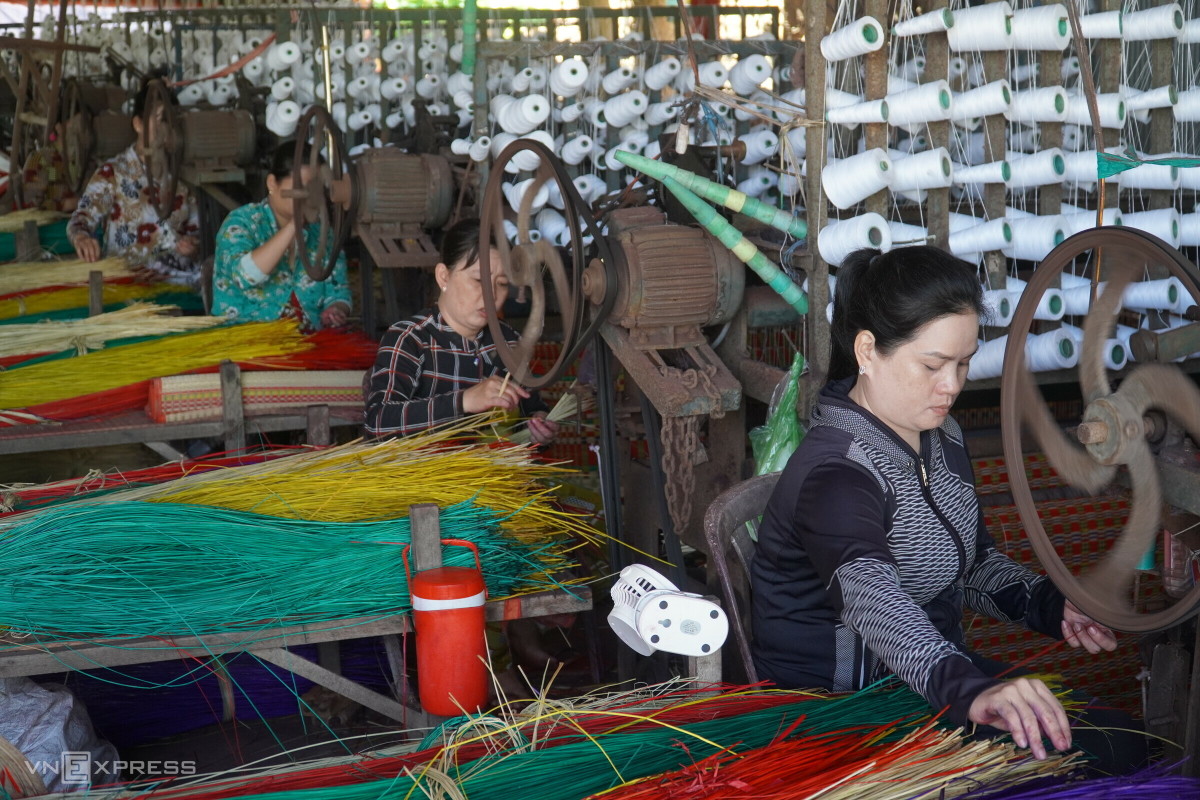
Weaving machines have been introduced to Dinh Yen over a decade ago, significantly increasing productivity compared to manual weaving. On average, an artisan can weave 10 mats a day using a machine, whereas manual weaving requires two people and yields only 3-4 mats.
Mr. Hung, owner of the Thanh Hung workshop, explains that while they usually produce 1,000-2,000 mats, the number doubles or triples ahead of Tet. Weavers also start earlier and finish later to boost their income during this festive season.
According to Mr. Hung, the mats are mainly consumed domestically, with some exports to Cambodia. However, recently, the export market has faced stiff competition, resulting in a decrease in the number of exports.
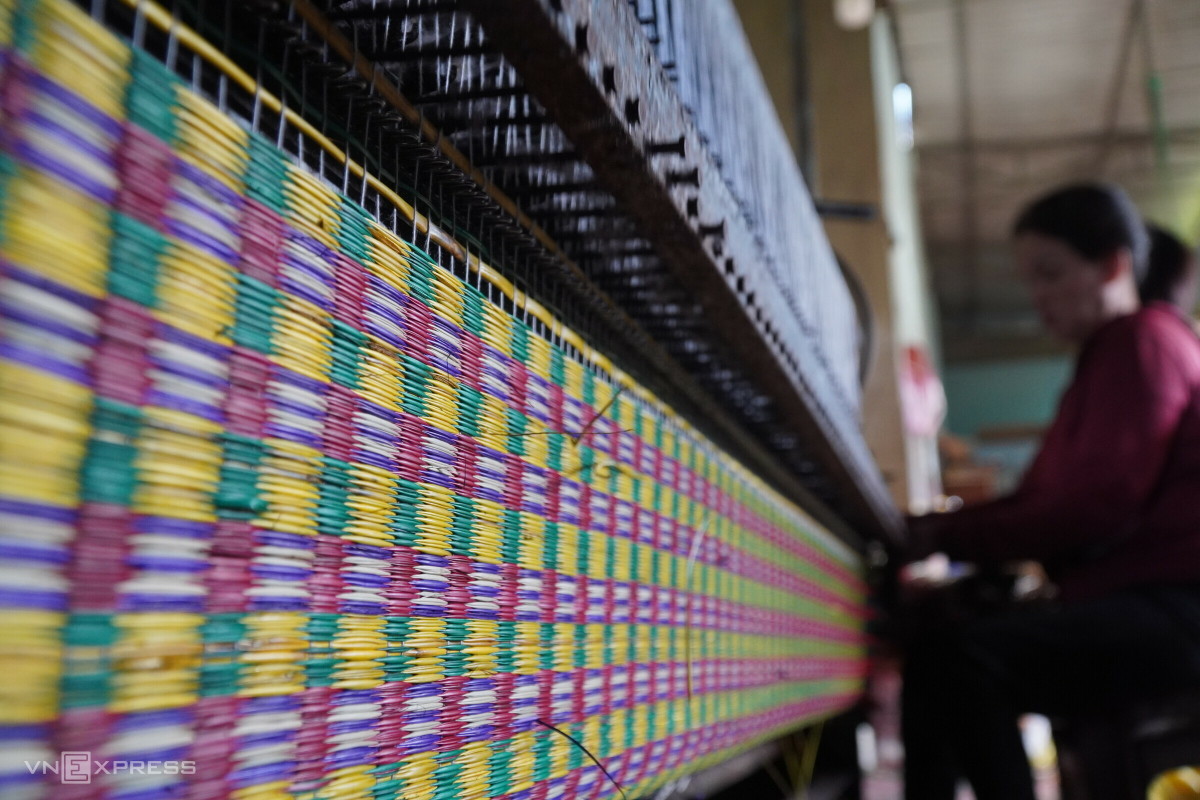
Ms. Vang, a mat weaver, shares that she can weave 10 mats a day and earns 150,000 VND. “Machine weaving requires close observation and skill. It’s not as easy as it looks,” she says.
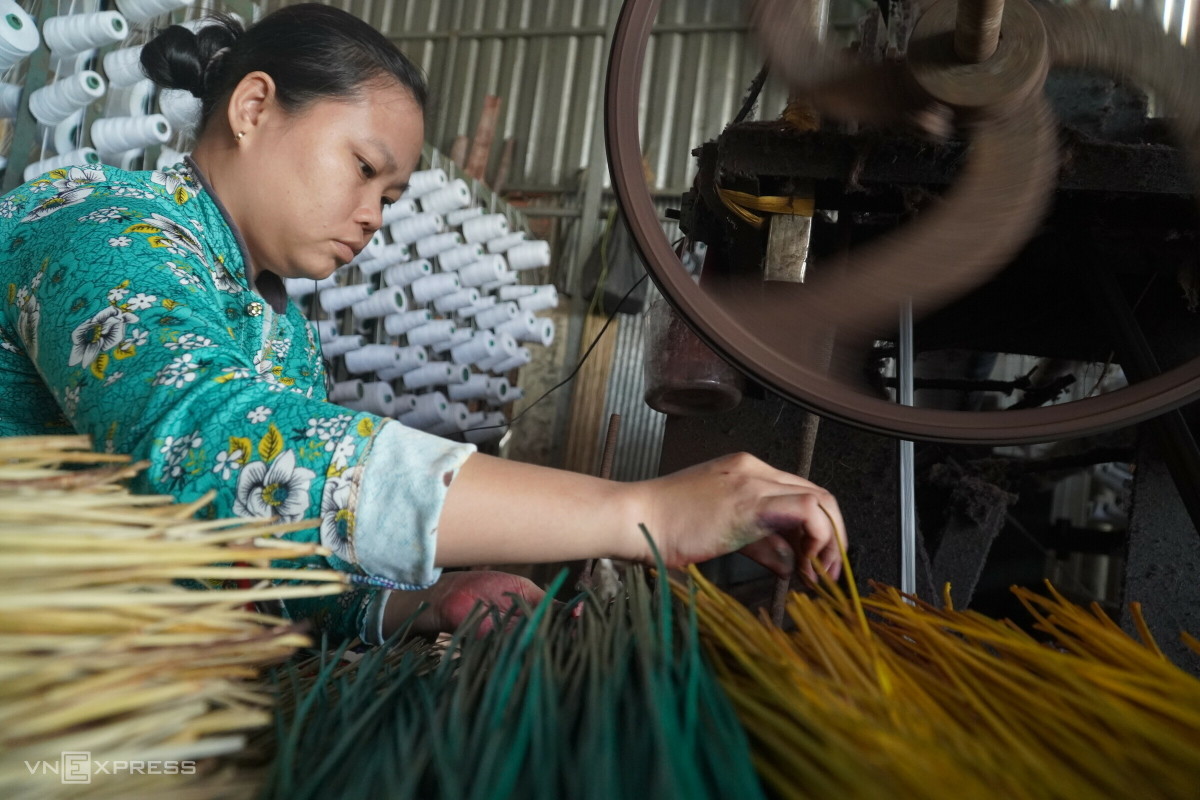
Weavers carefully feed the lat fibers into the machines, adjusting them to create unique patterns and designs. Their work demands focus and precision.
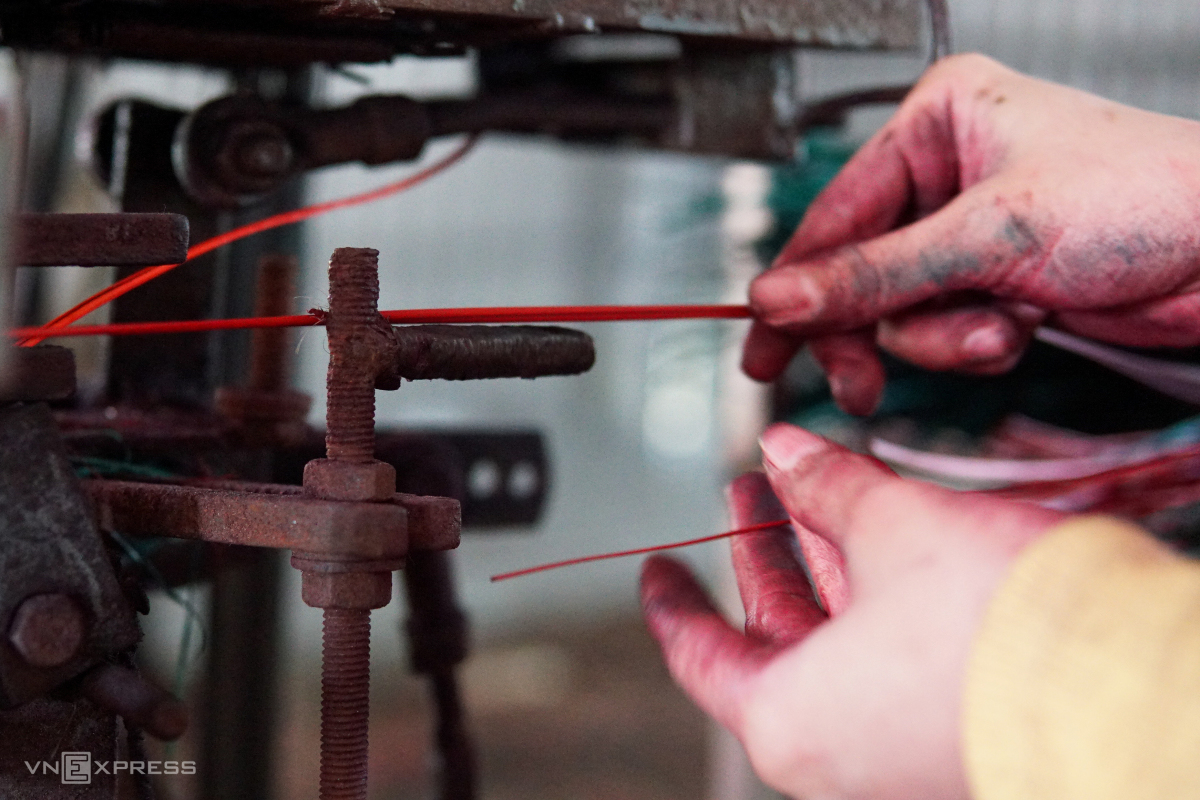
After hours of weaving, the artisans’ hands are stained with dye.
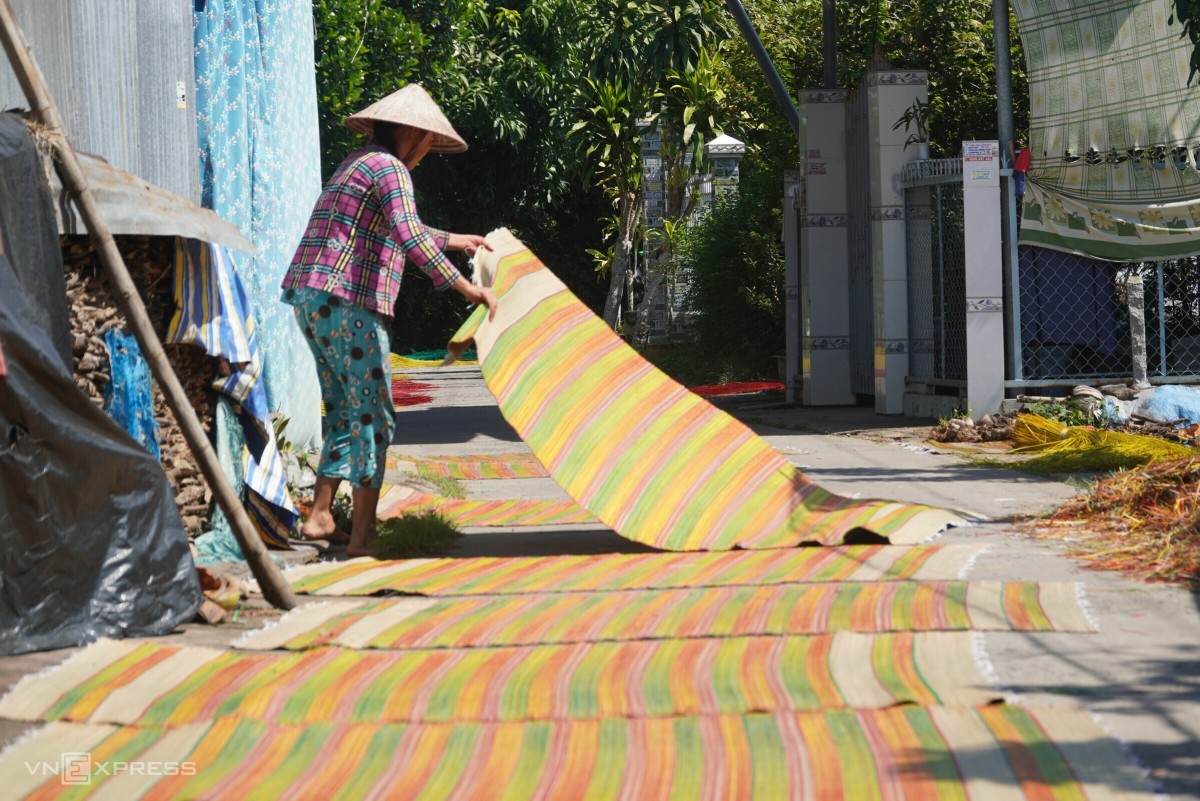
The freshly woven mats are laid out to dry in the sun, adding a splash of color to the village roads. This process helps prevent mold and ensures the mats are ready for use.
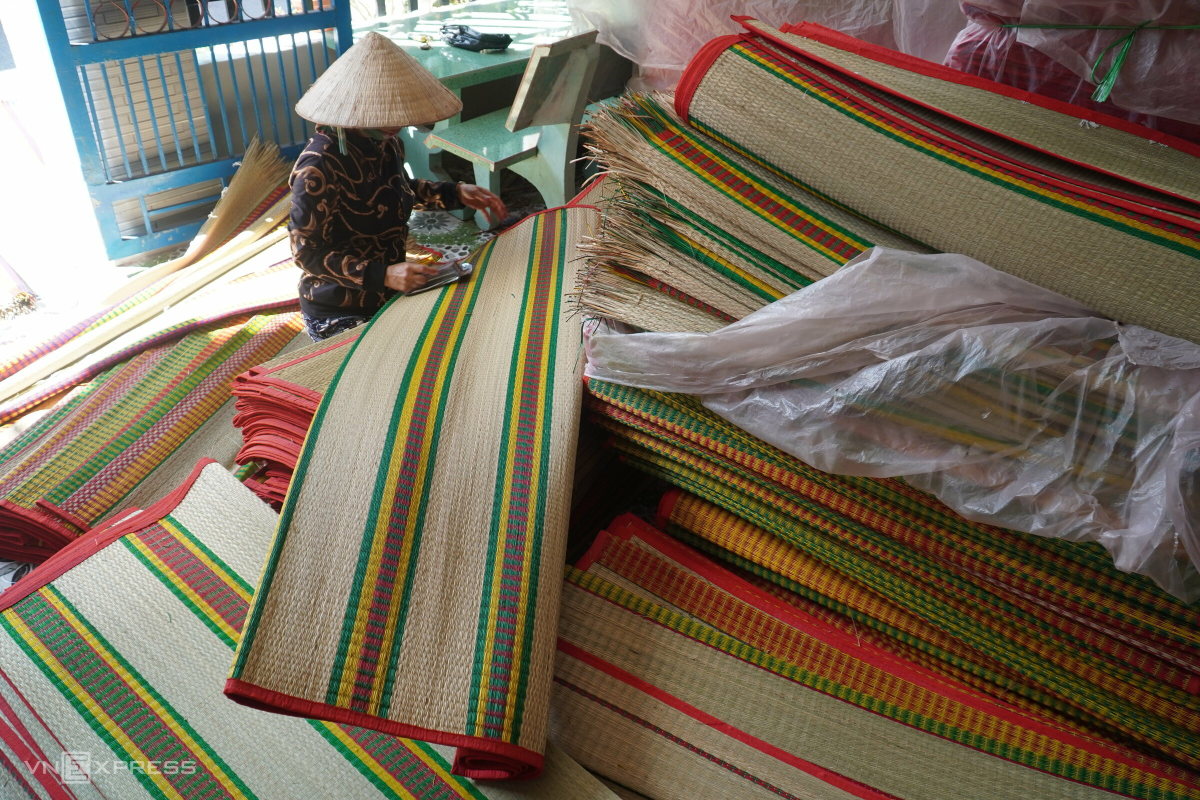
Once dry, the mats are bound and finished. Artisans use a special tool, resembling a double-edged knife, to trim excess fibers and inspect the final product before it’s ready for sale.
The mats are categorized based on their weaving techniques, resulting in various types such as regular mats, spiral mats, and checkerboard mats. Experienced artisans can instantly recognize a quality mat by its intricate patterns, weight, and thickness.
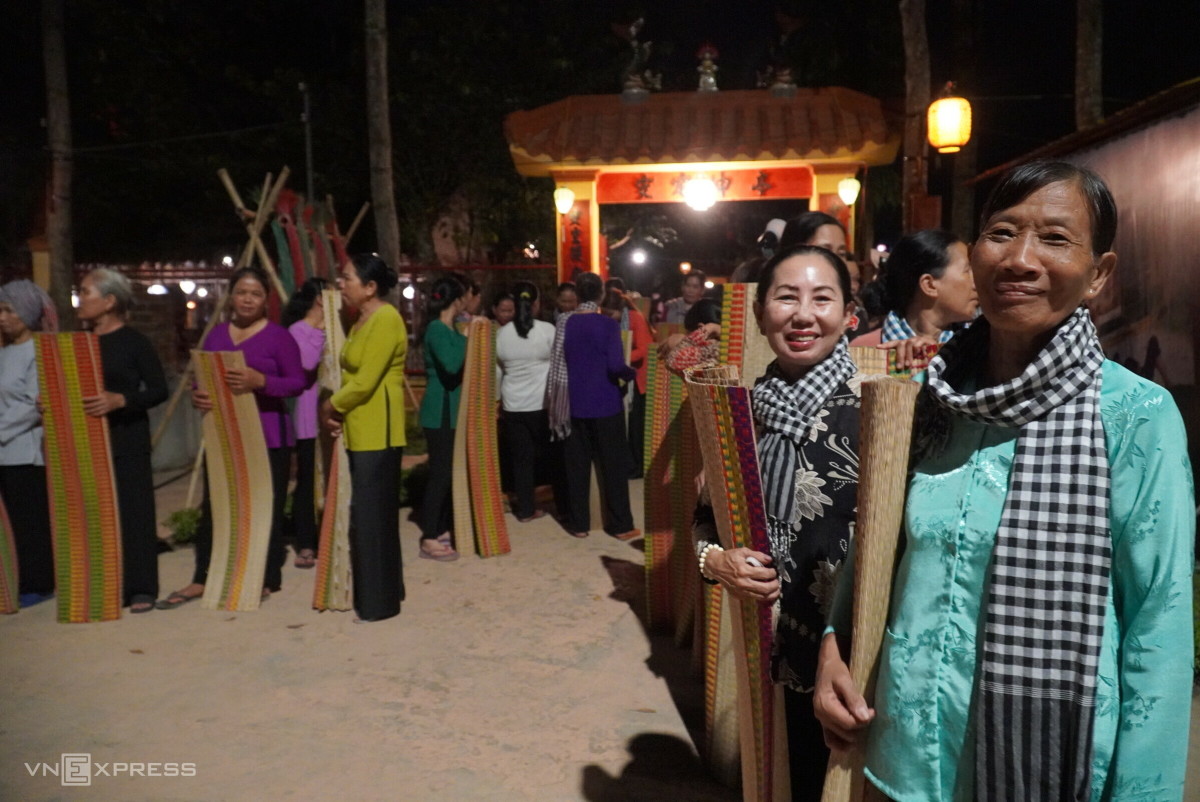
Ms. Huynh Thi Hoai Thu, Director of the Department of Culture, Sports, and Tourism of Dong Thap province, shares that Dinh Yen weaving village is one of the four National Intangible Cultural Heritages in the province. The department is actively promoting tourism for the village while also focusing on human resource development and connecting it to existing tour routes within the province.
According to Ms. Thu, the village periodically hosts a “ghost mat market,” recreating the night market atmosphere of decades past. This unique market combines a live performance with a traditional market selling local delicacies, attracting visitors and promoting the village’s rich weaving heritage.
Why You Shouldn’t Keep Chickens Beyond Their Prime: The Six-Year Itch
“Chicken is a popular household pet in Vietnam, but why is it advised not to keep them for more than six years? This is a question that has perplexed many. Superstition or wisdom, there may be some truth to this age-old adage. Uncover the reasons why and explore the fascinating world of Vietnamese folklore and its unique connection with these feathered friends.”
The Heart of Hue: A Country Market with a Twist.
Nestled amidst the white sandy beaches of Thua Thien Hue, Vinh Thanh Market buzzes with vibrant energy amidst the tranquil countryside. Beyond being a mere trading hub for locals, this unique market convenes thrice daily, vividly portraying the distinct cultural practices of a region nestled between the sea and the lagoon.
The Heart of Nam Dinh: Unveiling a 700-Year-Old Marketplace, Overflowing with Nostalgia and Local Pride
Stepping into this ancient market in Nam Dinh, visitors are not only immersed in the traditional architectural space with its faded tile roofs and earthen bricks but also given the chance to relive their childhood through simple rustic treats such as sweet soups, ‘banh gai’ (a type of steamed glutinous rice cake), fried dough sticks, and ‘banh dung’ (a local delicacy made from glutinous rice).

























